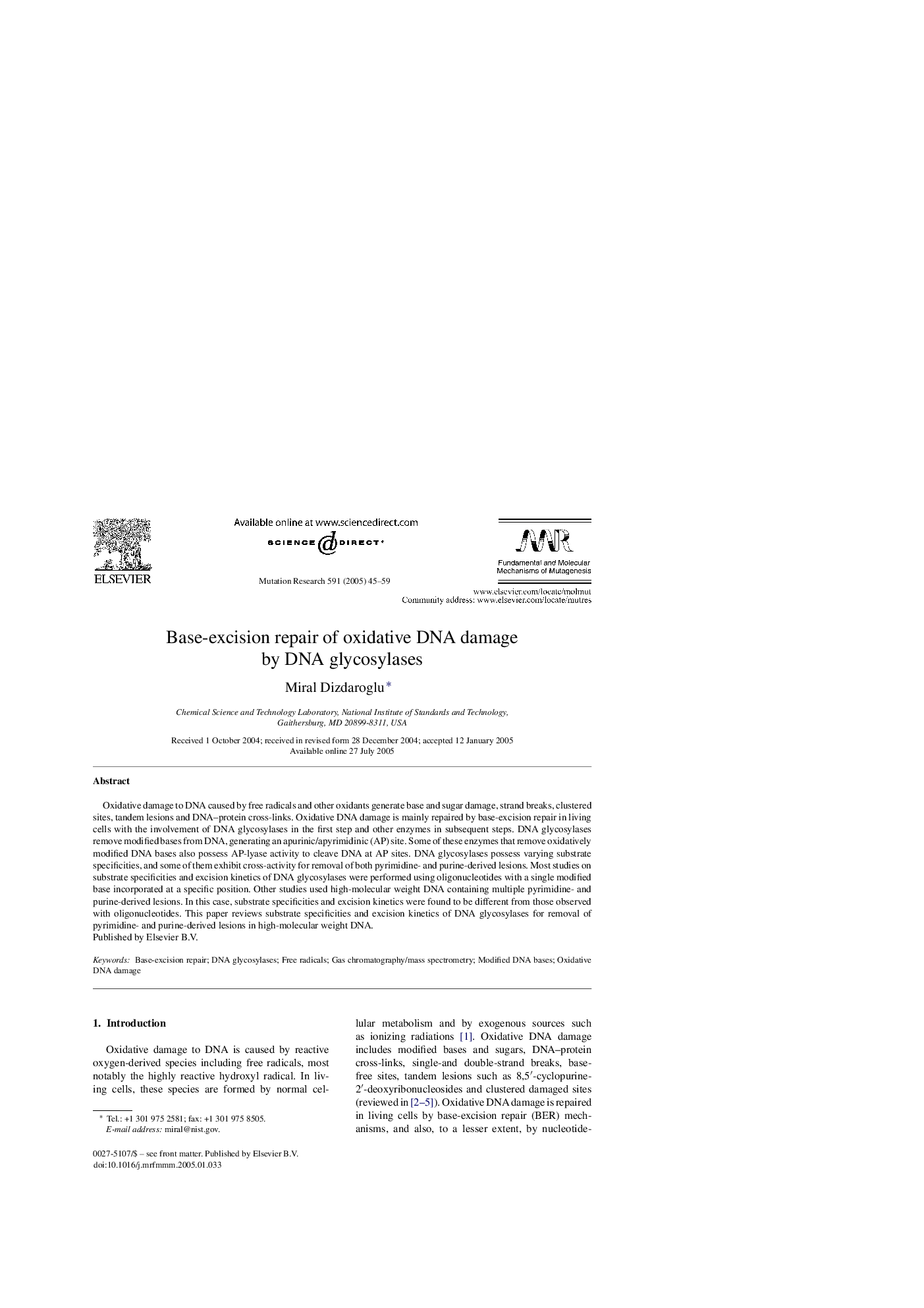| Article ID | Journal | Published Year | Pages | File Type |
|---|---|---|---|---|
| 9908961 | Mutation Research/Fundamental and Molecular Mechanisms of Mutagenesis | 2005 | 15 Pages |
Abstract
Oxidative damage to DNA caused by free radicals and other oxidants generate base and sugar damage, strand breaks, clustered sites, tandem lesions and DNA-protein cross-links. Oxidative DNA damage is mainly repaired by base-excision repair in living cells with the involvement of DNA glycosylases in the first step and other enzymes in subsequent steps. DNA glycosylases remove modified bases from DNA, generating an apurinic/apyrimidinic (AP) site. Some of these enzymes that remove oxidatively modified DNA bases also possess AP-lyase activity to cleave DNA at AP sites. DNA glycosylases possess varying substrate specificities, and some of them exhibit cross-activity for removal of both pyrimidine- and purine-derived lesions. Most studies on substrate specificities and excision kinetics of DNA glycosylases were performed using oligonucleotides with a single modified base incorporated at a specific position. Other studies used high-molecular weight DNA containing multiple pyrimidine- and purine-derived lesions. In this case, substrate specificities and excision kinetics were found to be different from those observed with oligonucleotides. This paper reviews substrate specificities and excision kinetics of DNA glycosylases for removal of pyrimidine- and purine-derived lesions in high-molecular weight DNA.
Keywords
Related Topics
Life Sciences
Biochemistry, Genetics and Molecular Biology
Cancer Research
Authors
Miral Dizdaroglu,
